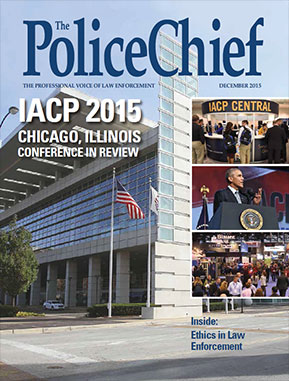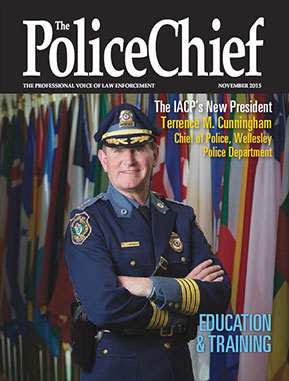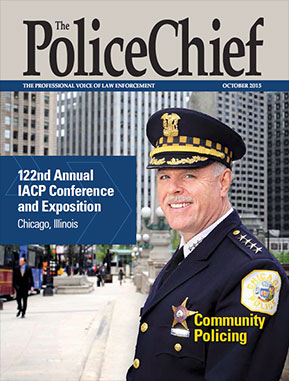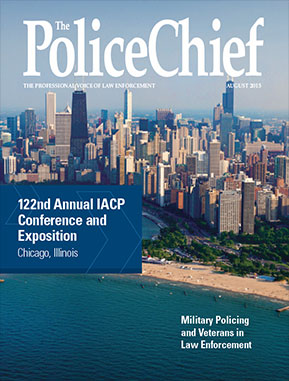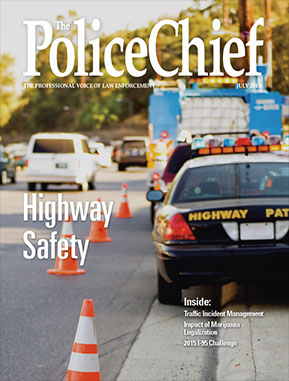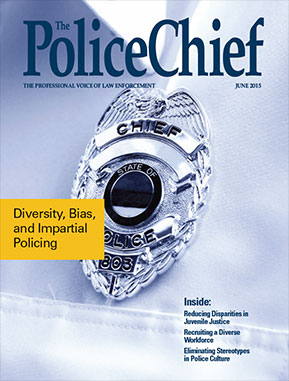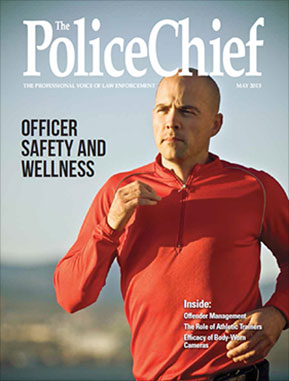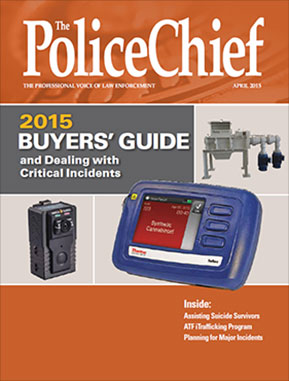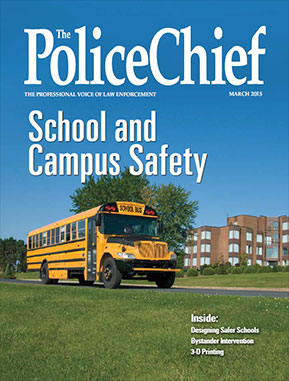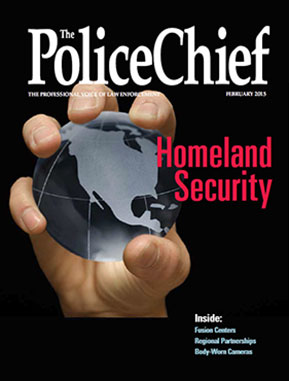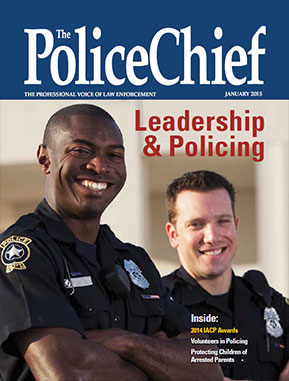Issue Archive
December 2015
Table of Contents
x
- Why Ethics Demand Immediate Attention
- Turning “Us Against Them” into “We’re In This Together”
- How to Encourage Reporting of Professional Misconduct
- The Professionalization of Policing in the U.K.: A Vital Opportunity to Improve Ethical Standards
- Unconstitutional Policing, Part 4: The Liability of Electronic Control Device Mis(Use)
- Doing the Right Thing: Contributing to the Advancement of the Police Profession
- Does Restorative Justice Have a Realistic Place in Today’s Criminal Justice System?
November 2015
Table of Contents
x
- Is Law Enforcement Training Affective Enough?
- Training to Work Effectively with Youth: Reflect on the Past and Retool for the Future
- FBI Investigative Technology Training: Preparing Officers for Investigating Cybercrimes
- SELECTING IN Recruits: Identifying Traits and Characteristics Indicative of Florida Highway Patrol Training Academy Success
- Ensuring Future Stability through Law Enforcement Partnerships
- Criminal Justice Degree Programs: Education with a Purpose
- Ideas & Insights: Police CEOs: Agents of Change?
- Ideas & Insights: Chiefs as Change Agents
- Unconstitutional Policing: Part 3–A Failure To Train Is Compensable Liability
- Gaining a Global Perspective: The IACP Visiting Fellows Program
October 2015
Table of Contents
x
- The Five-Legged Stool: A Model for CIT Program Success
- Citizen Advisory Boards in Contemporary Practice: A Practical Approach in Policing
- It’s Time—A Commitment to Community Policing
- Reserve Policing in the United States: Citizens Volunteering for Public Service
- Product Feature: Innovation on Display at IACP 2015
- Unconstitutional Policing: Part 2—Minimizing Liability Strategies That Start and End at the Top
- Collaborative Reform in Spokane, Washington: A Case Study and Its Implications for Police Reform
- Broken Windows and Policing
August 2015
Table of Contents
x
- The Department of Defense’s Support to Law Enforcement Agencies in Countering Drug Trafficking
- Strengthening Capabilities through U.S. Army Interagency Fellowships
- Twice Sworn—The Benefits of Dual-Career Police Professionals to Civilian and Military Police Units
- Military Veterans and the Contemporary Challenges in Law Enforcement
- U.S. Combat Veterans in Crisis: Veterans Helping Veterans
- Military Installation Active Shooter Response Plans: A Collective Law Enforcement Agency Effort
- The Paradox of Police Development: Community Policing for High-Threat Environments
- From CompStat to RespectStat: Accountability for Respectful Policing
- Reply to RespectStat: Good, Now Let’s Go One Step Farther
- 117th Annual IACP Conference—Orlando, Florida
July 2015
Table of Contents
x
- Mission: Control – The Design of an Efficient and Safe Public Safety Facility
- Private Police Coming to a Neighborhood Near You! Why Private Police May Be an Important Element of Future Law Enforcement
- Traffic Incident Management: The Next Evolution in Officer Safety
- Measuring the Impact of Marijuana Legalization with the Washington Roadside Survey of Driver Drug and Alcohol Use
- Understanding and Applying Traffic Incident Management
- NMVTIS Law Enforcement Access Tool: A Free Resource for Vehicle-Related Investigations
- Collaborating on Interstate Safety
- Preparing Officers for Traffic Court—Responding to Radar-Centered Questioning
- The Inside Information Checklist (IIC)
June 2015
Table of Contents
x
- Fair and Impartial Policing: A Science-Based Approach
- Recruiting a Diverse Law Enforcement Workforce
- The Multnomah County Experience: Reducing Racial and Ethnic Disparities in Juvenile Justice
- Eliminating Gender and Racial Stereotypes in Police Culture through Stakeholder Collaboration
- Tactical Social Interaction Training: Innovation in Multi-Cultural Adaptation and Communication Programs
- Citizen Perceptions of Online Crime Reporting Systems
May 2015
Table of Contents
x
- Mistakes, Reasonable Mistakes, and Unforgiveable Mistakes: The U.S. Supreme Court’s Ruling in Heien v. North Carolina
- Not Just for SWAT Teams: The Importance of Training Officers in Tactical Emergency Medicine
- BLUE: Starting the Conversation about Officer Stress and Depression
- Athletic Trainers: A Fresh Approach to Reducing Medical Costs and Enhancing Safety
- Breaking the Invincibility Code: How the Below 100 Initiative Is Improving the Law Enforcement Safety Culture
- Officer Safety Through Offender Management
- The Evolution of Education and Training, and Where U.S. Policing Is Heading
- A Reflection on Policing Reforms
- Leading the Future of Law Enforcement: Understanding the Capacity of Employees to Think, Learn, and Achieve
April 2015
Table of Contents
x
- POLICE WEEK 2015
- Critical Incident Management: A Systematic Guide to Planning
- The ATF National Response Team—Responding to Fires and Explosions
- Officer Survival Simulation Training
- The ATF iTrafficking Program: Integration of Firearms Trace/Ballistic Data into Fusion Center Intelligence Sharing
- Homeland Security Investigations Follow the Money Trails to Combat Crime
- Suicide Loss First Aid: How Police Officers Can Assist Suicide Survivors
- Explosives Risk Management: ATF Training to Improve Explosives Safety
March 2015
Table of Contents
x
- Police Futuring—Is It in Your Future?
- Training and Teamwork Put to the Test: The 2013 Santa Monica College Shooting
- Enhancing School Safety Through Digital Intelligence: The Campus Shield Initiative
- The Impact of School Resource Officers on Community-Based Policing
- Bystander Intervention: Options for Campus Involvement in Crime Prevention
- Preparing for the Worst: Active Shooters in Our Schools—An International Perspective
- The Effects of Active Shooter Resilience Training Programs on College Students’ Perceptions of Personal Safety
- 3-D Printing: The Potential Implications and Challenges for Law Enforcement
February 2015
Table of Contents
x
- Considering the Remote Use of Force via Unmanned Aerial Vehicles
- Leadership Consciousness in Policing
- The Role and Efforts of the IACP Committee on Homeland Security
- Impacting the Evolution of Information Sharing in the Post-9/11 United States
- Fusion Centers: Enabling a Domestic Architecture for Sharing Information on a Range of Criminal Threats
- Regional Partnerships: The Greater Boston Area’s Approach to Large-Scale Security
- Telling Stories: Preventing Violent Extremism Through Community Engagement
- Connecting the Dots: Fusion Centers Working with Higher Education to Combat Terrorism
- The 1033 Program: Effect on Law Enforcement and the Debate Surrounding It
- Police Body-Worn Cameras: An Overview
January 2015
Table of Contents
x
- Preparing for the Cyberthreat: The Vulnerability of the U.S. Electric Grid
- Leadership Integrity: How to Get It, How to Keep It, and Why It Matters
- Group Socialization and Cohesion in Policing
- Forrester’s Rules for Organizational Change Lessons for Police Leadership
- Leadership in Mourning: Leading Personnel Through a Line-of-Duty Death, Suicide, or Other Tragedy
- FirstNet to Bring the Power of Advanced Mobile Technologies to Law Enforcement
- Protecting Children of Arrested Parents: Steps for Developing and Implementing an Effective Policy
- Volunteers in Police Service: Celebrating 12 Years of Adding Value through Law Enforcement Volunteerism


